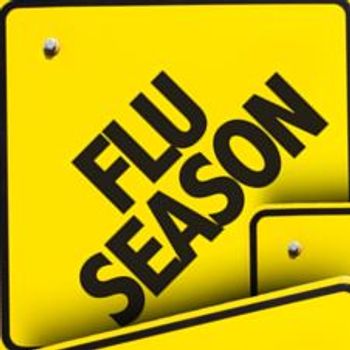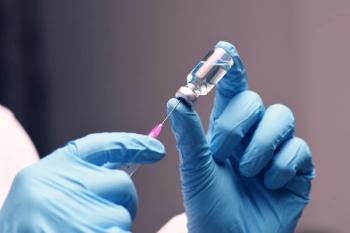
Man With Reflux Symptomsand Esophageal Papular Lesions
A 51-year-old man with a 12.5-pack-year smoking history had symptomssuggestive of gastroesophageal reflux disease for 6 weeks.
A 51-year-old man with a 12.5-pack-year smoking history had symptoms suggestive of gastroesophageal reflux disease for 6 weeks. Over-the-counter antacids provided partial relief. For the past 2 weeks, he had worsening dyspepsia and a burning sensation in the epigastric region.
An endoscopic evaluation was performed. An image of the distal esophagus is shown.
What is the most likely diagnosis?
- Candida esophagitis
- Herpes simplex virus esophagitis
- Crohn disease involving the esophagus
- Glycogenic acanthosis
- Behet disease
(Answer on next page.)
Correct answer: Glycogenic acanthosisGlycogenic acanthosis is usually benign. As shown here, it often consists of multiple papular esophageal lesions (Figure). This finding is not uncommon during endoscopic evaluation of the upper GI tract.1 The lesions are usually numerous and smaller than 2 cm, although they can be as large as 6 cm.2 Glycogenic acanthosis is rarely associated with Cowden syndrome, celiac disease, or reflux esophagitis. 3,4 Biopsy of the lesions must be performed to rule out other GI diseases.
This patient's biopsy results revealed benign epithelial hyperplasia-a frequent finding of glycogenic acanthosis. He was treated with a proton pump inhibitor for 2 weeks and by behavioral modification, which included counseling for smoking cessation. After 2 months, the patient's reflux symptoms resolved.
Less likely conditions in the differential include:
•Candida esophagitis. This infection is associated with white plaques, usually no more than 2 mm in diameter without ulceration. Biopsy of these lesions usually reveals the organisms.
•Herpes simplex virus esophagitis. This infection may have a “cobblestone” appearance similar to that of Candida esophagitis on a barium study. However, on endoscopic examination, the lesions are more discrete and resemble “punched-out” ulcers with yellow rims, also called volcano ulcers. Bullous formation is common, and ulcers may be exudative, mimicking Candida esophagitis. Biopsy is helpful in confirming the diagnosis.
•Crohn disease–related esophagitis. This condition may present with patchy ulcerations that involve the transmural region. Biopsy of these lesions often shows classic granuloma formation.
•Behet disease. This disease more commonly produces aphthous ulcers and rarely esophageal lesions. These ulcers may further cause erosions and stenosis of the esophagus. These findings are not consistent with glycogenic acanthosis.5
References:
REFERENCES:
1.
Bender MD, Allison J, Cuartas F, Montgomery C. Glycogenic acanthosis of the esophagus: a form of benign epithelial hyperplasia.
Gastroenterology
. 1973;65:373-380.
2.
Lee JK, Kum J, Ghosh P. Education and imaging. Gastrointestinal: glycogenic acanthosis.
J Gastroenterol Hepatol
. 2007;22:1550.
3.
McGarrity TJ, Wagner Baker MJ, Ruggiero FM, et al. GI polyposis and glycogenic acanthosis of the esophagus associated with PTENmutation positive Cowden syndrome in the absence of cutaneous manifestations.
Am J Gastroenterol
. 2003;98:1429-1434.
4.
Suoglu OD, Emiroglu HH, Sokucu S, et al. Celiac disease and glycogenic acanthosis: a new association?
Acta Paediatr
. 2004;93:568-570.
5.
Yamada T, Alpers DH, Owyang C, et al.
Textbook of Gastroenterology
. 2nd ed. Philadelphia: Lippincott Williams & Wilkins; 1995:1244, 1248-1249, 1290-1291.
Newsletter
Enhance your clinical practice with the Patient Care newsletter, offering the latest evidence-based guidelines, diagnostic insights, and treatment strategies for primary care physicians.
























































































































































































































































































